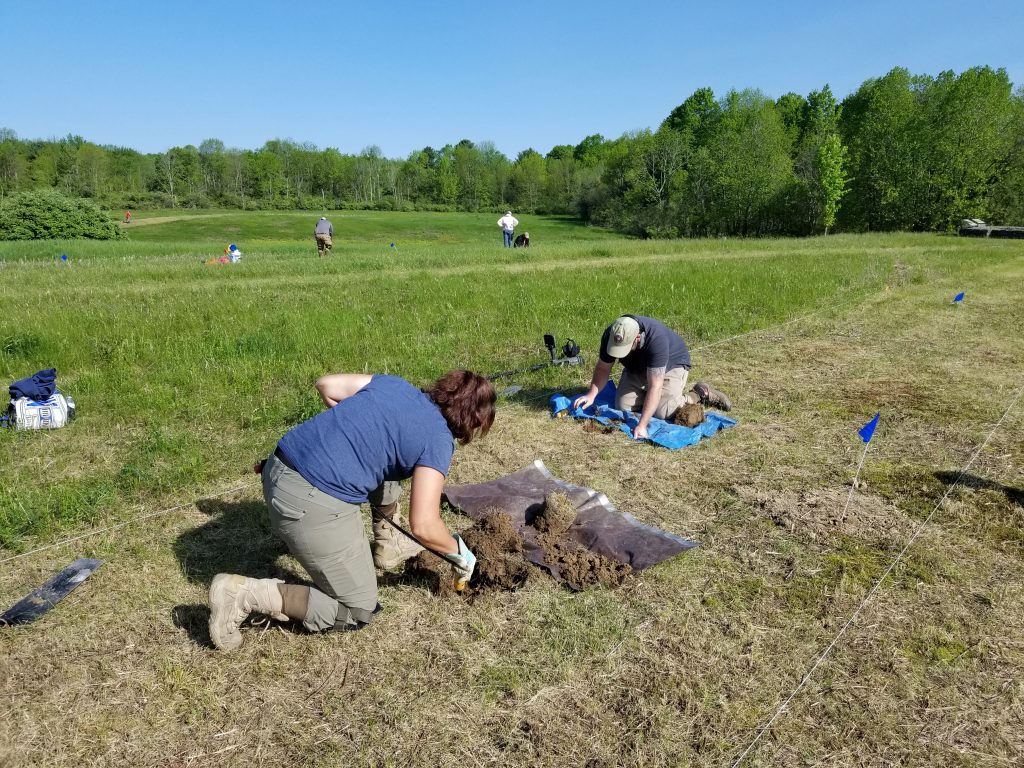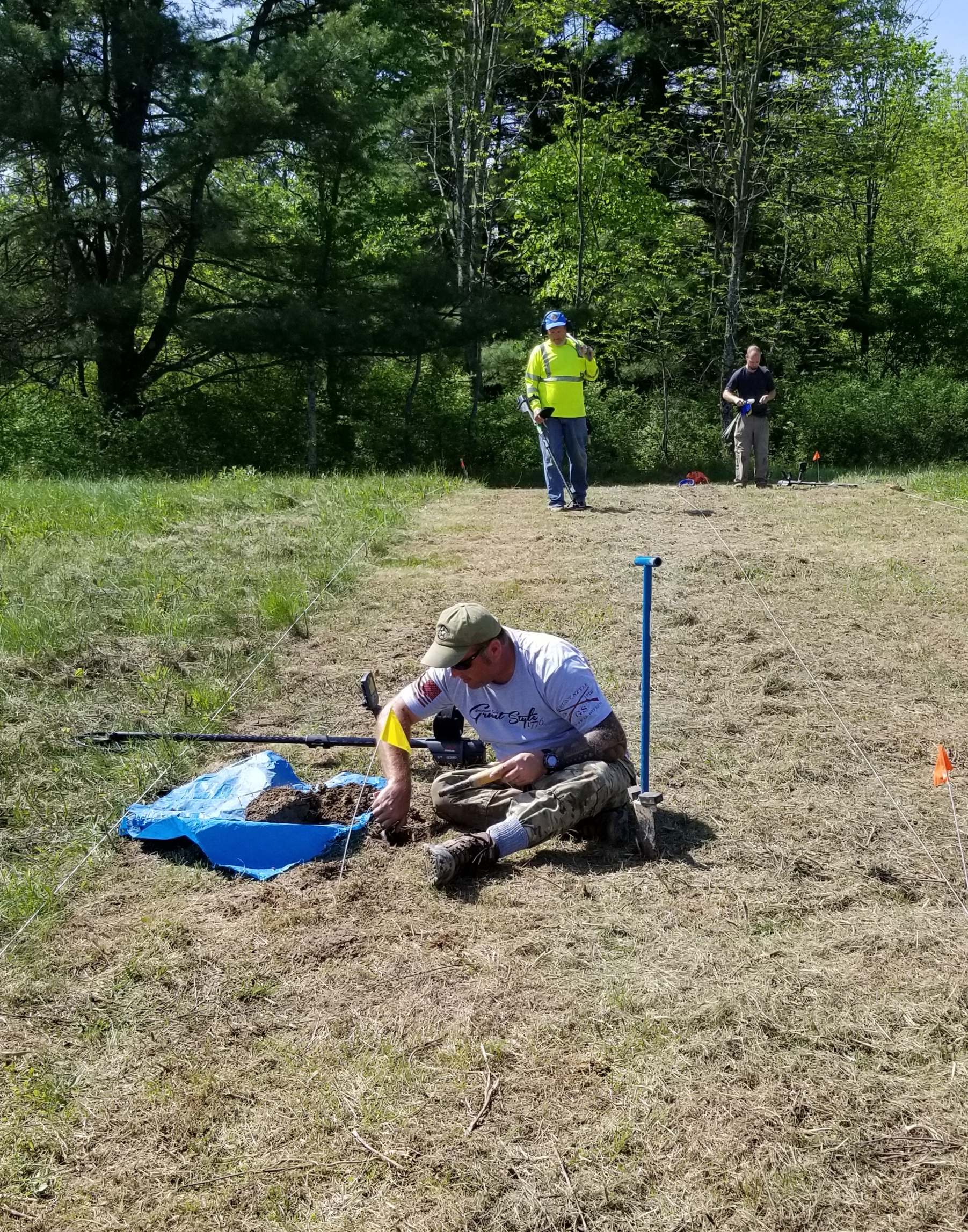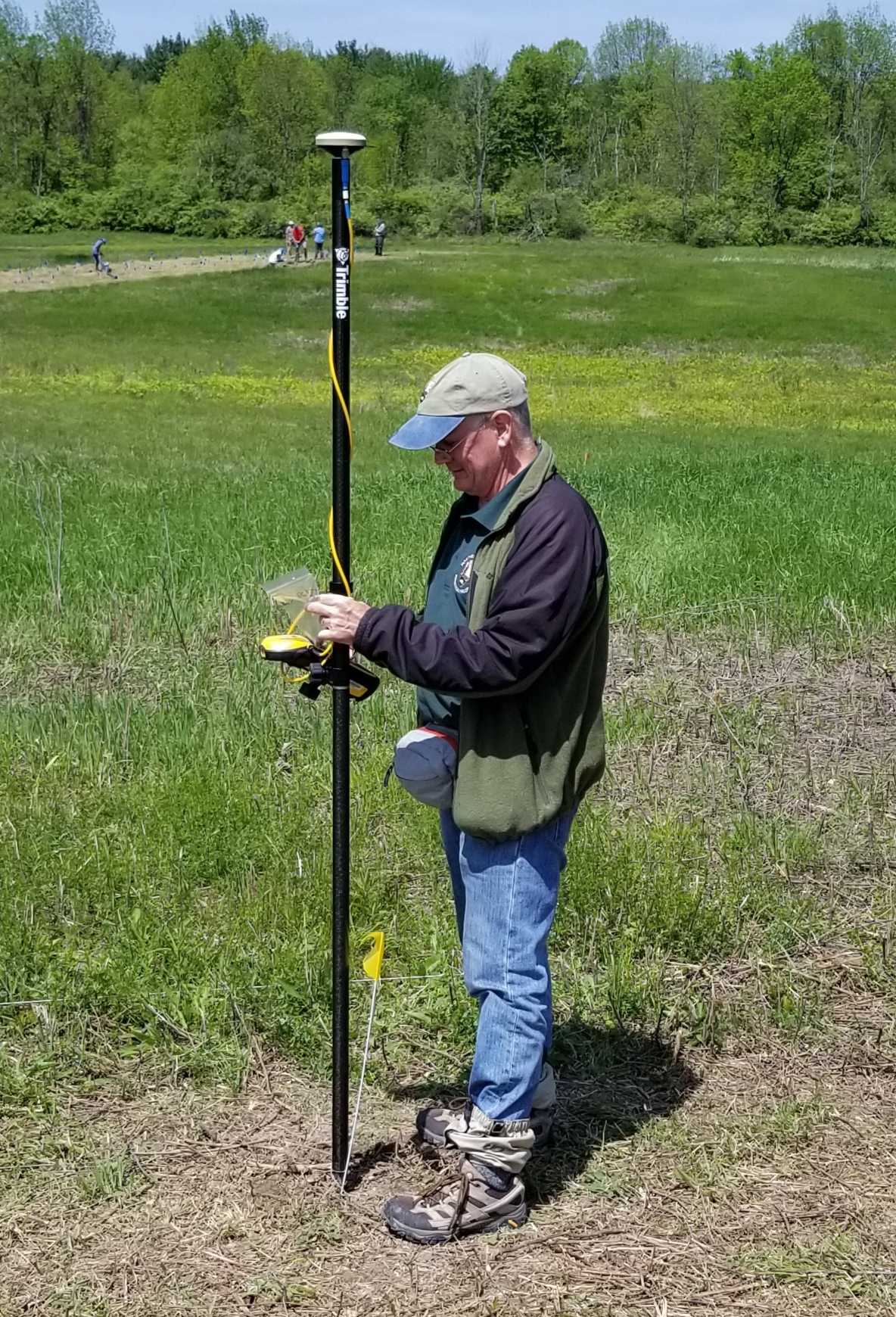As a Revolutionary War material culture guy, I get to see and handle some wonderful pieces of history. Swords, muskets, buttons, equipment, archival documents, and so much more. Being into the arms and such made me want to study the ballistics of the guns and how they function when firing live. We collect the ballistics data as well as the fired ball to have a better understanding of how they function. It’s a lot of fun to have a broader understanding of the objects I deal with as well as the history. But what ties it all together for me is archaeology. Working on a battlefield, I can put all my knowledge to use to help professional archaeologists understand what they are finding in the ground.

A few years ago, I volunteered on a project at Saratoga helping to teach veterans how to use metal detectors and proper methodology on the battlefield. I have to say I went into it very honored and excited to be working there and came out of the project very different. American Veterans Archaeological Recovery (AVAR) had teamed up with the National Park Service (NPS) and asked an organization I am involved with, Advanced Metal Detecting for the Archaeologist (AMDA), to come and help train the AVAR folks. The first day we gave an orientation class on the history of metal detection equipment, the equipment we would be using, proper use in archaeology, history of the site we would be working on and then we went out to the field. For AMDA it was a weeklong project, but the veterans would be staying to learn about the use of geophysical equipment and conservation work on the found objects. The second day we started early in the morning surveying lanes that had been prepared for us. It wasn’t long before the veterans began to find artifacts related to the battle and see their reactions. Some of these folks have PTSD and were very quiet, but as the week went on and we began to piece together all the objects and data there was a spark in their eyes missing a few days before. They were working as a team and finding history! The excitement was infectious to say the least and by the end of the week I was sad I was leaving. On top of finding great history that could be interpreted on the site we formed bonds and friendships that lasted long past the end of the project, and I still talk to many of the team members every few weeks to check in and see how they are doing. Because of COVID, last year’s project was postponed, but this week we meet back up and get back to it again. I hope some of the new participants come away from the project with the same sense of team and history that I did.
Note: Metal detecting on National Park Service property is illegal. The above-mentioned project is permitted and supervised by the National Park Service Northeast Archeological Resources Program.






